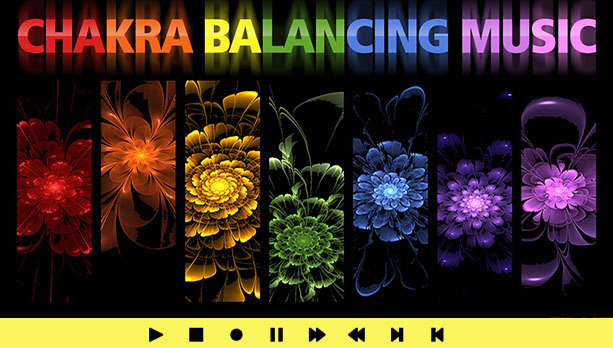What Does Namaste Mean?

Namaste! You may have heard this term before. Did you know you were saying and using it wrong? What does namaste mean? Today we will learn the namaste greeting, uncover the origin, and discover it’s meaning. Where did namaste originate? Let’s find out.
What Does Namaste Mean?
First of all, the term namaste signifies the belief that there is a divine light inside each of us. Furthermore, this inner spark is located in the chakra, specifically the heart. Above all, what does namaste mean? The namaste greeting is actually straightforward. Most noteworthy, when you say namaste to another, you are giving and receiving permission for your soul to connect directly. Even more, Nama means bow and greet. Therefore, namaste means “I bow to you,” with the authority to accept the greeting in return. Namaste is a request for powerful, personal, and deep connection. It is not a word to be thrown around. There are non-formal greetings with less weight for that. Consequently, as you thoroughly learn the namaste greeting, this will become apparent.
Where Did Namaste Come From?
The word namaste derives from Sanskrit and means “I bow to you.” Therefore, what does namaste mean? First of all, Sanskrit is the language of Hinduism. You have probably heard some other Sanskrit terms, as well. Most noteworthy, other well-known words from Sanskrit include “karma” and “nirvana.” Hence, the expression is shaped from namaḥ, meaning “bowing with respect.” Namaste is a ubiquitous greeting in India. In India, it is common to refer to adult friends as uncles and aunts. Even more, you would greet every individual who falls under this umbrella with the formal namaste greeting. Americans certainly do not view namaste as merely a greeting. It has a spiritual connection. Fun fact, you will rarely hear yoga or mindful teachers in India say namaste. The is US-based.
What Language is Namaste?
You may think that namaste is used only in India and in the United States, this is not true. First of all, you can hear namaste spoken in countries nearby to India like Nepal, and Bangladesh. Ask yourself, “what does namaste mean?” Above all, also consider locale and origin. Hence, as we learn the namaste greeting, it is vital to know usage. Even more, while we have referenced the heart chakra, namaste is also related to the brow chakra. Furthermore, the brow chakra is more commonly known as the “mind’s eye” or the “third eye.” Hence, when you connect with the namaste greeting, you are offering a joining of souls. As you can guess by now, this shouldn’t be a generalized greeting. Most noteworthy, you are expressing love, profound respect, and undying friendship. Would you want to open that connection to everyone?
Learn the Namaste Greeting
Finally, it is now time to learn the namaste greeting. First of all, place your hands together. Above all, they should align in front of your heart and heart chakra. Close your eyes and bow your head in a respectful and inviting manner. Even more, what does namaste mean? First of all, namaste is a deep and encouraging connection. Furthermore, this is a uniquely profound form of respect. Outside of India, you speak the namaste greeting. In India, the gesture signifies namaste. Hence, it is unnecessary to speak the greeting. As you bring your hands together, you increase flow of divine love. Realistically, it doesn’t have to be a greeting to another – it can be to yourself. One can do namaste to oneself as a mindfulness method. As you now understand, there are different uses and meanings, even if subtle.
Namaste and India
First of all, you took the time to learn the namaste greeting. Even more, you can now answer, “What does namaste mean?” You understand the deep profound meaning. Likewise, you know of usage in (and near) India. Finally, you have learned the sometimes-improper usage across the United States. Therefore, let’s focus on India. Most noteworthy, people speak over a thousand languages across the Indian subcontinent. There is only one way to say hello: Namaste. We certainly have to say this now and here: you are saying “namaste” wrong. Most noteworthy, “nah-mah-stay” isn’t the proper pronunciation. The most shared salutation to use in India is namaste, but it sounds like “nuhm-uh-stay.” Whether you correct people in yoga class or not is entirely up to you. Even more, although namaste began as a way to show deep respect, the usage now if of a common greeting in the US.
Using the Namaste Greeting
Finally, you have taken the time to learn the namaste greeting. Your higher self is awaiting. Consequently, let’s break it down one more time for ease of use. First of all, the pronunciation of namaste differs slightly around the world. Pronounce the first syllables with an “uh” sound than an “ah” sound (as often heard in the US). You accompany a friendly namaste greeting with a gesture known as the pranamasana. Above all, place the palms together, the hands should be in front of the chest, fingertips up. Similarly, a very slight bow of the head shows new respect. Even more, the Indian head wobble that accompanies the greeting is not easy to perform or understand for Westerners initially. Finally, it seems the US has adopted it as a form of less more profound address, slightly altered from the Indian counterpart.
So, as we conclude, what does namaste mean? First of all, it is a formal greeting where you are inviting and offering a connection of divine light. Even more, it is a deep soul connection. Finally, now that we have taken the time to learn the namaste greeting. We are all better off for it.
WANT TO TAKE MINDFULNESS TO THE NEXT LEVEL WITH MUSIC? CLICK HERE!
TO ALL OUR READERS, today we humbly ask you to help our little blog. For over ten years now, BinauralBlog.com has been producing fantastic mindfulness articles. We do not beg for donations, use any intrusive popups, sell any form of user data, or fill our content with ads. How do we sustain ourselves? We need shares, plain and simple. The time has come for us to make a simple request. Please, if you enjoyed this article and want us to keep producing content - use any (or all) of the CIRCULAR SHARE BUTTONS ABOVE to help support our little blog. Thank you from the Binaural Blog, Founder & Team




Thank you for this. I see this term used incorrectly all over the internet especially YouTube. This was the perfect explanation.
I have to admit I have seen and used this but never actually took the time to learn what it means on a deeper level other than as a greeting.
Now that we all know about this, I say to you: namaste
Finally! Thank you for explaining this to me in a way I can understand.
This has just become a saying people who want to sound mindful use in the united states at least. Most of these people don’t even know the root.
My only experience with this word is in and around US Zen gatherings and communications. In such settings, it used when one cannot bow, which is always the case in print, and can be the case in person, if carrying something. It is not to be used lightly. It is not a casual greeting. It is an acknowledgement and generally deferential. It is never used when one can silently bow to convey reverence, and it is not spoken redundantly when bowing. It is important to realize that the culture of others can only be borrowed and should only be used with respect.